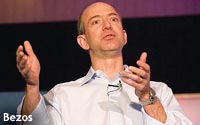Customer Experience Better At Tech-Focused Brands Vs. Trad Media
- by Gavin O'Malley @mp_gavin, January 23, 2012
 Among 160 brands, Amazon was the only technology company to rank as “excellent” in Forrester’s latest customer experience index.
Among 160 brands, Amazon was the only technology company to rank as “excellent” in Forrester’s latest customer experience index.
The achievement is all the more impressive considering that -- as Forrester found -- U.S. customers are becoming harder to please. Indeed, the percentage of brands in the "excellent" category dropped from 6% last year to just 3% this year -- continuing a steady downward trend from 2008 to 2012.
Difficult as it may be, however, “improving customer experience can have an enormous positive impact on a firm’s bottom line,” according to Forrester analyst Megan Burns.
To calculate its customer experience scores, Forrester asked some 7,600 U.S. consumers about their interactions with a variety of brands, and then subtracted the percentage of customers who reported bad experiences from the percentage who reported good experiences.
Brands typically rate “OK” (65 to 74) to “very poor” (less than 55). This year, 64% of brands got a rating of “OK,” “poor” (55 to 64), or “very poor” from their customers, while 37% rated “good” (75 to 84) or “excellent” 85 and higher).
Technology-focused brands with “good” consumers ratings included eBay, Apple and iTunes, Microsoft Xbox, Nintendo, Vizio, and Samsung.
“Poor” performers included AOL, BlackBerry, T-Mobile, Time Warner Cable, Cablevision, Verizon, and Cox Communications.
For the first time since 2007, not one single company broke the 90 threshold, while the good and poor categories grew by equal amounts.
The percentage of companies with good and poor ratings each jumped by five percentage points. In 2011, just 29% of companies earned a good rating; this year it was 34%.
But at the same time, the percentage of companies in the poor category went from 18% last year to 23% this year. Growth in these categories comes mostly at the expense of the "excellent" and "OK" categories, which dropped by three and four percentage points, respectively.
Digging deeper into this year’s results, Forrester assessed how each of the 13 industries in the index did as a whole. For the third year in a row, retailers and hotels had the highest average scores across all respondents -- an 81 out of 100 for retailers and a 76 out of 100 for hotels.
Once again, health insurance plans -- 55 out of 100 -- TV service providers -- 56 -- and Internet service providers -- 56 -- ranked lowest among all brands.
Consumer electronics manufacturers fared well in their debut appearance. For 2012, Forrester swapped out the narrow PC manufacturer category for the broader consumer electronics manufacturer category. With this expanded scope, these brands earned an average score of 73, which put them fourth in this year’s industry rankings.
Meanwhile, the gap between leaders and laggards widened in banking and retail. Last year, 24 points separated the high- and low- scoring banks in our index. This year, that gap jumped 10 points to 34.
Overall brand leader USAA raised the high bar by six points, while the industry low score dipped from a 59 to a 55.
The gap between the high- and low-scoring retailers grew by six points from 15 to 21, but not because of improvement among industry leaders, according to Forrester, In fact, this year’s top score was just 87 compared with last year’s 90, and the low score dropped by nine points from good -- 75 -- to just OK -- 66.
Along with USAA and Amazon, other top performers included Kohl’s, Costco Wholesale, Hampton Inn, La Quinta Inn & Suites, and Courtyard by Marriott.
The lowest scores went to Qwest and Medicaid, along with Charter Communications, Comcast, and AT&T.
For brands that wish to improve their customer experience rankings, Forrester suggests a systematic approach to diagnosing what’s wrong today, fixing the problems, and making systematic changes to limit the likelihood of problems reoccurring.


